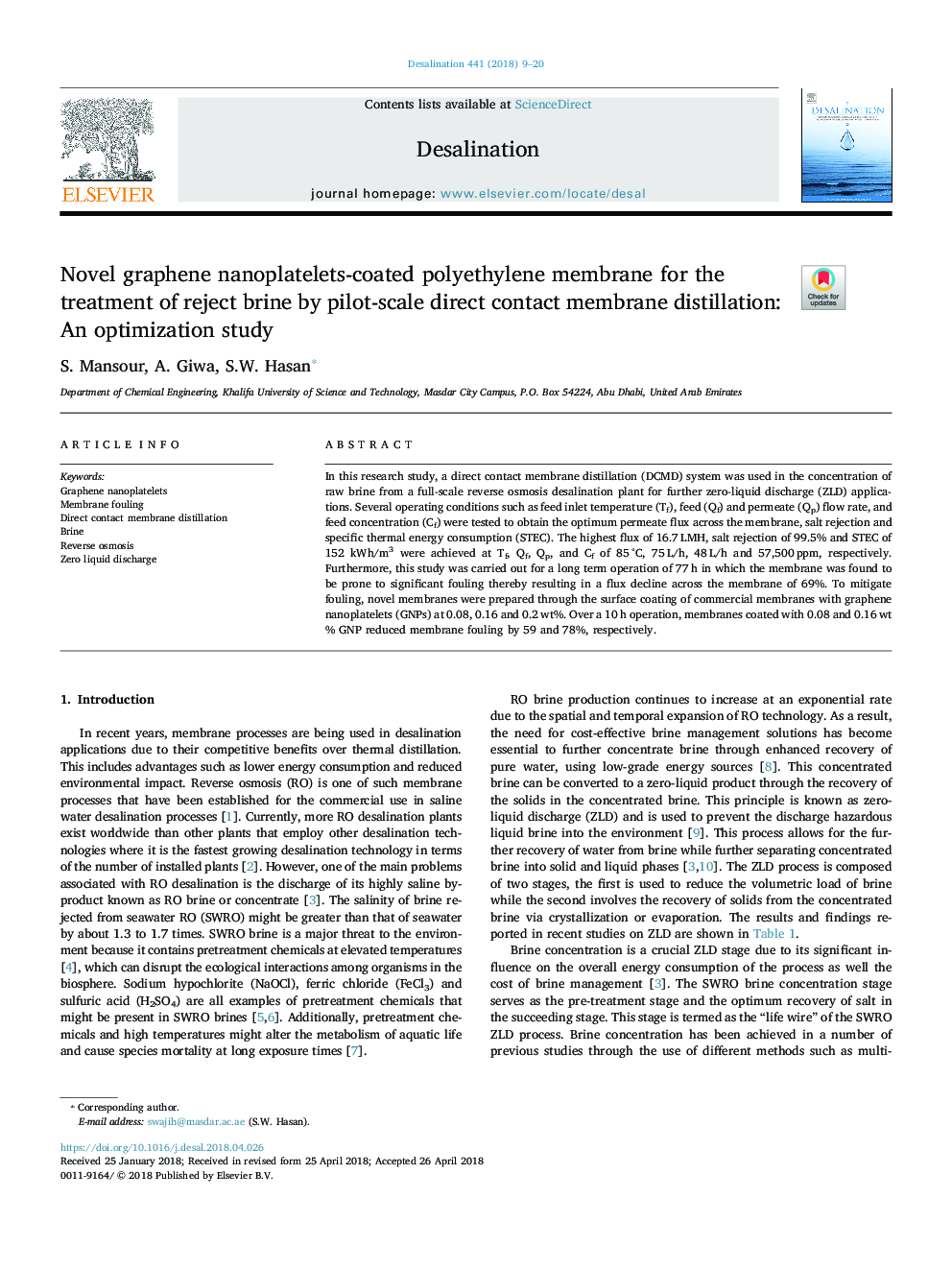| Article ID | Journal | Published Year | Pages | File Type |
|---|---|---|---|---|
| 7007738 | Desalination | 2018 | 12 Pages |
Abstract
In this research study, a direct contact membrane distillation (DCMD) system was used in the concentration of raw brine from a full-scale reverse osmosis desalination plant for further zero-liquid discharge (ZLD) applications. Several operating conditions such as feed inlet temperature (Tf), feed (Qf) and permeate (Qp) flow rate, and feed concentration (Cf) were tested to obtain the optimum permeate flux across the membrane, salt rejection and specific thermal energy consumption (STEC). The highest flux of 16.7â¯LMH, salt rejection of 99.5% and STEC of 152 kWh/m3 were achieved at Tf, Qf, Qp, and Cf of 85â¯Â°C, 75â¯L/h, 48â¯L/h and 57,500â¯ppm, respectively. Furthermore, this study was carried out for a long term operation of 77â¯h in which the membrane was found to be prone to significant fouling thereby resulting in a flux decline across the membrane of 69%. To mitigate fouling, novel membranes were prepared through the surface coating of commercial membranes with graphene nanoplatelets (GNPs) at 0.08, 0.16 and 0.2â¯wt%. Over a 10â¯h operation, membranes coated with 0.08 and 0.16â¯wt% GNP reduced membrane fouling by 59 and 78%, respectively.
Keywords
Related Topics
Physical Sciences and Engineering
Chemical Engineering
Filtration and Separation
Authors
S. Mansour, A. Giwa, S.W. Hasan,
